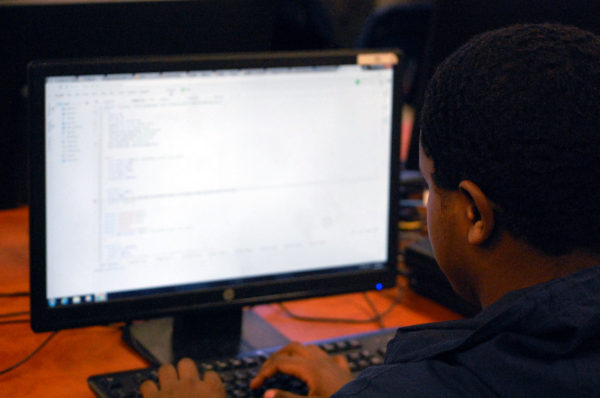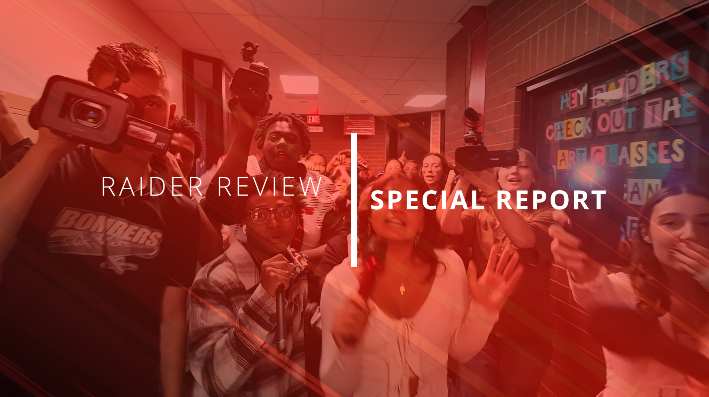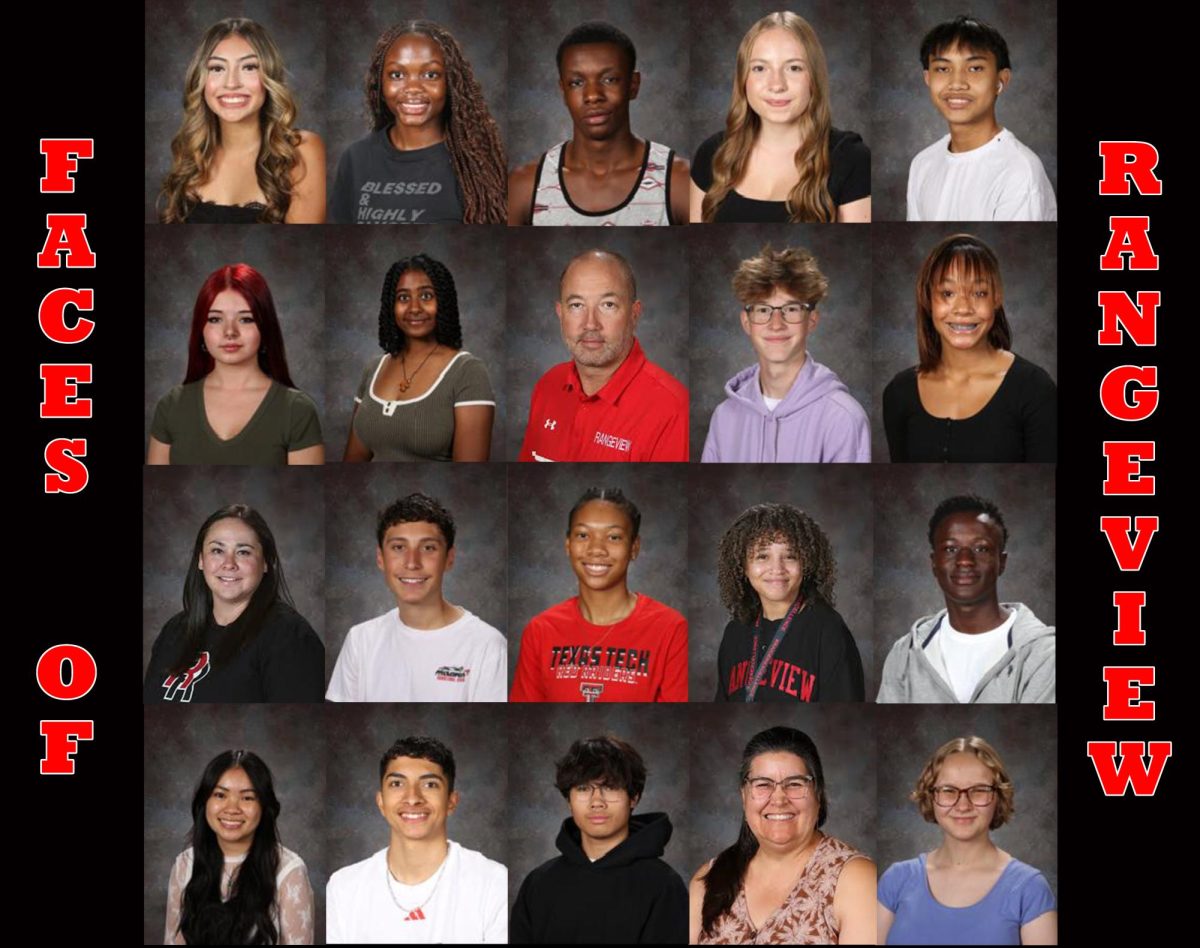Feature Photo By: Kenny Nguyen – Senior Tolamariam Nemomsa sits in Mr. Petry’s AP computer science class. Nemomsa and other classmates worked on coding.
At Rangeview, 31% of white-identifying students exceeded expectations in mathematics — only 12% of black-identifying students exceeded, according to statistics provided by Rangeview.
Welcome to the “achievement gap,” defined as a significant disparity between the academic performance of different ethnic or racial groups of students. As seen by the statistic above, an achievement gap is present at Rangeview, throughout several Aurora Public Schools, and in most schools in the United States.
Since the Brown vs. Board of Education court case occurred in 1954, there has been an end to segregation in public schools. Conditions in schools for minorities have been generally improving.
Over a half a century later, however, studies show there is still much more progress that needs to be made in terms of inclusion, diversity, and social and academic equity.
A recent study conducted by Stanford University found that Colorado was one of three U.S. states where the black-white achievement gap increased significantly in the last decade. Students at Rangeview are just as impacted by this gap as other schools in Colorado.
“There is a 19% achievement gap,” said Mrs. Hartford, Rangeview assistant principal. “Between our African American students and highest performing white students. This is unacceptable.”
Rangeview administration has identified an achievement gap at the school and recognizes that this is an issue. So the question remains, what is being done about it?
This school year, Rangeview introduced the African American Parent Committee (AAPC). Students and teachers may have noticed several parents sitting in classrooms and observing the environment. These parents are likely members of the AAPC.
The parents periodically visit several classrooms across the school to observe teaching methods and class interaction, especially the behavior and engagement of minority male students. They are searching for possible problems in the classroom that could be leading to the achievement gap and looking for ways to solve them.
“The reason we have African American parents [in the group] is to address the achievement gap,” said Mrs. Hartford. “We need the perspectives from our African American parents to see if anything we’re doing in the classroom is causing the achievement gap.”

Something like this has never been done at Rangeview before, according to Mrs. Hartford.
She says despite this, staff and parent reactions have all been extremely positive. More people are supporting and participating in the effort to close the achievement gap at Rangeview.
The opinion of minority students about issues in the classroom is very important to solving this issue, as they are the students experiencing the gap, many say.
“The teaching regimen could be different,” said Kaleb Starling, a black-identifying sophomore. “Most teachers are just ‘sit down, don’t talk, do your worksheet.’ They could make class more engaging to the students, especially minority students.”
Currently, the AAPC has visited classrooms around Rangeview three times, with more to come. They have found a few issues in classrooms that could possibly be leading to the achievement gap.
“The teachers have so much that they have to cover that they don’t necessarily have time to pay attention to students who are slacking off,” said Dr. Campbell, a parent in the AAPC. “If children don’t feel connected to the classroom and content, it just exacerbates the problem [the achievement gap].”
Dr. Campbell is a professor at Metropolitan State University. She teaches diversity, communication, rhetorical criticism, and freedom of speech. In the classrooms at Rangeview, Dr. Campbell witnessed a few situations where teachers missed several opportunities to connect the lesson plans to the students’ lived experiences and what matters to them. This, she says, can lead to a disconnect between students and the academic content.
One of Dr. Campbell’s suggestions is for K-12 curriculum is to avoid over-emphasis on the narratives and histories of white, middle to upper class, able-bodied, Christian, heterosexual, male people. She asks how can students be engaged if they don’t see themselves and their diverse experiences, realities, and stories highlighted in the curriculum?
“We [African Americans] kind of know that we’re at a disadvantage,” Starling said. “Some people use it [the achievement gap] as a crutch for why they can’t excel in school.”
This seems to be implying that the achievement gap can oftentimes be a self-fulfilling prophecy. Students use the achievement gap as an excuse as to why the can’t excel, further adding to the gap, some experts say.
“…it depends on the mindset of the person if they want to succeed,” said Shaye Savage, white-identifying freshman.
Dr. Campbell, however, argues that notion.
“There is a common notion that the problem is merely a lack of personal motivation from students, which ignores the very serious structural inequities that plague many of our schools,” she said. “The problem will never be solved if people continue to ignore the systemic inequities and only place blame on the individuals.”
This, she says, is why she admires Mrs. Hartford and Mr. Fay so much for taking on this complex issue.
Mrs. Hartford and the AAPC plan to continue their work throughout next year with the goal of offering recommendations for teachers and staff. They also plan to expand to include parents of many different groups of students at Rangeview.




